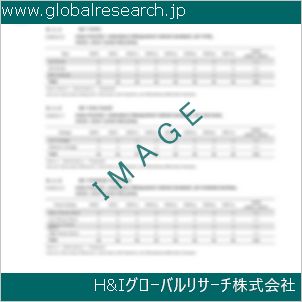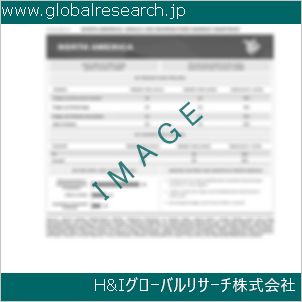Table of Contents
1 Industry Overview of Fluorenone
1.1 Definition and Specifications of Fluorenone
1.1.1 Definition of Fluorenone
1.1.2 Specifications of Fluorenone
1.2 Classification of Fluorenone
1.3 Applications of Fluorenone
1.3.1 Nuclear Application
1.3.2 Non-Nuclear Application
1.4 Industry Chain Structure of Fluorenone
1.5 Industry Overview and Major Regions Status of Fluorenone
1.5.1 Industry Overview of Fluorenone
1.5.2 Global Major Regions Status of Fluorenone
1.6 Industry Policy Analysis of Fluorenone
1.7 Industry News Analysis of Fluorenone
2 Manufacturing Cost Structure Analysis of Fluorenone
2.1 Raw Material Suppliers and Price Analysis of Fluorenone
2.2 Equipment Suppliers and Price Analysis of Fluorenone
2.3 Labor Cost Analysis of Fluorenone
2.4 Other Costs Analysis of Fluorenone
2.5 Manufacturing Cost Structure Analysis of Fluorenone
2.6 Manufacturing Process Analysis of Fluorenone
3 Technical Data and Manufacturing Plants Analysis of Fluorenone
3.1 Capacity and Commercial Production Date of Global Fluorenone Major Manufacturers in 2023
3.2 Manufacturing Plants Distribution of Global Fluorenone Major Manufacturers in 2023
3.3 R&D Status and Technology Source of Global Fluorenone Major Manufacturers in 2023
3.4 Raw Materials Sources Analysis of Global Fluorenone Major Manufacturers in 2023
4 Capacity, Production and Revenue Analysis of Fluorenone by Regions, Types and Manufacturers
4.1 Global Capacity, Production and Revenue of Fluorenone by Regions 2019-2024
4.2 Global and Major Regions Capacity, Production, Revenue and Growth Rate of Fluorenone 2019-2024
4.3 Global Capacity, Production and Revenue of Fluorenone by Types 2019-2024
4.4 Global Capacity, Production and Revenue of Fluorenone by Manufacturers 2019-2024
5 Price, Cost, Gross and Gross Margin Analysis of Fluorenone by Regions, Types and Manufacturers
5.1 Price, Cost, Gross and Gross Margin Analysis of Fluorenone by Regions 2019-2024
5.2 Price, Cost, Gross and Gross Margin Analysis of Fluorenone by Types 2019-2024
5.3 Price, Cost, Gross and Gross Margin Analysis of Fluorenone by Manufacturers 2019-2024
6 Consumption Volume, Consumption Value and Sale Price Analysis of Fluorenone by Regions, Types and Applications
6.1 Global Consumption Volume and Consumption Value of Fluorenone by Regions 2019-2024
6.2 Global and Major Regions Consumption Volume, Consumption Value and Growth Rate of Fluorenone 2019-2024
6.3 Global Consumption Volume and Consumption Value of Fluorenone by Types 2019-2024
6.4 Global Consumption Volume and Consumption Value of Fluorenone by Applications 2019-2024
6.5 Sale Price of Fluorenone by Regions 2019-2024
6.6 Sale Price of Fluorenone by Types 2019-2024
6.7 Sale Price of Fluorenone by Applications 2019-2024
6.8 Market Share Analysis of Fluorenone by Different Sale Price Levels
7 Supply, Import, Export and Consumption Analysis of Fluorenone
7.1 Supply, Consumption and Gap of Fluorenone 2019-2024
7.2 Global Capacity, Production, Price, Cost, Revenue, Supply, Import, Export and Consumption of Fluorenone 2019-2024
7.3 USA Capacity, Production, Price, Cost, Revenue, Supply, Import, Export and Consumption of Fluorenone 2019-2024
7.4 EU Capacity, Production, Price, Cost, Revenue, Supply, Import, Export and Consumption of Fluorenone 2019-2024
7.5 China Capacity, Production, Price, Cost, Revenue, Supply, Import, Export and Consumption of Fluorenone 2019-2024
7.6 Japan Capacity, Production, Price, Cost, Revenue, Supply, Import, Export and Consumption of Fluorenone 2019-2024
8 Major Manufacturers Analysis of Fluorenone
8.1 Manufacturer One
8.1.1 Company Profile
8.1.2 Product Picture and Specifications
8.1.2.1 Type I
8.1.2.2 Type II
8.1.2.3 Type III
8.1.3 Capacity, Production, Price, Cost, Gross and Revenue
8.1.4 Contact Information
8.2 Manufacturer Two
8.2.1 Company Profile
8.2.2 Product Picture and Specifications
8.2.2.1 Type I
8.2.2.2 Type II
8.2.2.3 Type III
8.2.3 Capacity, Production, Price, Cost, Gross and Revenue
8.2.4 Contact Information
8.3 Manufacturer Three
8.3.1 Company Profile
8.3.2 Product Picture and Specifications
8.3.2.1 Type I
8.3.2.2 Type II
8.3.2.3 Type III
8.3.3 Capacity, Production, Price, Cost, Gross and Revenue
8.3.4 Contact Information
8.4 Manufacturer Four
8.4.1 Company Profile
8.4.2 Product Picture and Specifications
8.4.2.1 Type I
8.4.2.2 Type II
8.4.2.3 Type III
8.4.3 Capacity, Production, Price, Cost, Gross and Revenue
8.4.4 Contact Information
8.5 Manufacturer Five
8.5.1 Company Profile
8.5.2 Product Picture and Specifications
8.5.2.1 Type I
8.5.2.2 Type II
8.5.2.3 Type III
8.5.3 Capacity, Production, Price, Cost, Gross and Revenue
8.5.4 Contact Information
…
9 Marketing Trader or Distributor Analysis of Fluorenone
9.1 Marketing Channels Status of Fluorenone
9.2 Traders or Distributors with Contact Information of Fluorenone by Regions
9.3 Ex-work Price, Channel Price and End Buyer Price Analysis of Fluorenone
9.4 Regional Import, Export and Trade Analysis of Fluorenone
10 Industry Chain Analysis of Fluorenone
10.1 Upstream Major Raw Materials Suppliers Analysis of Fluorenone
10.1.1 Major Raw Materials Suppliers with Contact Information Analysis of Fluorenone
10.1.2 Major Raw Materials Suppliers with Supply Volume Analysis of Fluorenone by Regions
10.2 Upstream Major Equipment Suppliers Analysis of Fluorenone
10.2.1 Major Equipment Suppliers with Contact Information Analysis of Fluorenone
10.2.2 Major Equipment Suppliers with Product Pictures Analysis of Fluorenone by Regions
10.3 Downstream Major Consumers Analysis of Fluorenone
10.3.1 Major Consumers with Contact Information Analysis of Fluorenone
10.3.2 Major Consumers with Consumption Volume Analysis of Fluorenone by Regions
10.4 Supply Chain Relationship Analysis of Fluorenone
11 Development Trend of Analysis of Fluorenone
11.1 Capacity, Production and Revenue Forecast of Fluorenone by Regions and Types
11.1.1 Global Capacity, Production and Revenue of Fluorenone by Regions 2024-2029
11.1.2 Global and Major Regions Capacity, Production, Revenue and Growth Rate of Fluorenone 2024-2029
11.1.3 Global Capacity, Production and Revenue of Fluorenone by Types 2024-2029
11.2 Consumption Volume and Consumption Value Forecast of Fluorenone by Regions, Types and Applications
11.2.1 Global Consumption Volume and Consumption Value of Fluorenone by Regions 2024-2029
11.2.2 Global and Major Regions Consumption Volume, Consumption Value and Growth Rate of Fluorenone 2024-2029
11.2.3 Global Consumption Volume and Consumption Value of Fluorenone by Types 2024-2029
11.2.4 Global Consumption Volume and Consumption Value of Fluorenone by Applications 2024-2029
11.3 Supply, Import, Export and Consumption Forecast of Fluorenone
11.3.1 Supply, Consumption and Gap of Fluorenone 2024-2029
11.3.2 Global Capacity, Production, Price, Cost, Revenue, Supply, Import, Export and Consumption of Fluorenone 2024-2029
11.3.3 USA Capacity, Production, Price, Cost, Revenue, Supply, Import, Export and Consumption of Fluorenone 2024-2029
11.3.4 EU Capacity, Production, Price, Cost, Revenue, Supply, Import, Export and Consumption of Fluorenone 2024-2029
11.3.5 China Capacity, Production, Price, Cost, Revenue, Supply, Import, Export and Consumption of Fluorenone 2024-2029
11.3.6 Japan Capacity, Production, Price, Cost, Revenue, Supply, Import, Export and Consumption of Fluorenone 2024-2029
12 New Project Investment Feasibility Analysis of Fluorenone
12.1 New Project SWOT Analysis of Fluorenone
12.2 New Project Investment Feasibility Analysis of Fluorenone
13 Conclusion of the Global Fluorenone (CAS 486-25-9) Industry 2024 Market Research Report
| ※参考情報 フルオレノン(Fluorenone)は、有機化合物の一種であり、分子式はC13H10Oで、CAS番号は486-25-9です。フルオレノンは、フルオレンから派生した化合物であり、その化学構造には、炭素環にケトン基が含まれています。この構造が、フルオレノンの化学的性質や反応性に大きく影響を与えています。 フルオレノンの特徴としては、まず、その物理的性質が挙げられます。フルオレノンは通常、無色または淡黄色の結晶として存在し、固体状態では比較的高い融点を持っています。また、揮発性のある液体でもあり、特定の条件下では気体としても存在することがあります。フルオレノンは水にはほとんど溶けませんが、エタノールやエーテルなどの有機溶媒には溶解します。これは、その分子中に含まれる極性の影響によるものです。 フルオレノンは、主にフルオレンの酸化反応によって生成され、その際に電子の移動が伴います。これにより、特定の反応環境下での化学的安定性を持ちます。さらに、フルオレノンは誘導体が豊富で、さまざまな変換反応が可能です。これにより、化学合成において非常に重要な中間体として利用されることが多くなっています。 フルオレノンの主な種類には、異性体や誘導体が含まれます。フルオレノン自体は、一つの構造を持つ化合物ですが、さまざまな官能基を導入することで、多様な誘導体が生成されます。例えば、メチル基やフェニル基の導入により得られるメチルフルオレノンやフェニルフルオレノンなどがあります。これらの誘導体は、異なる化学的性質や反応性を示します。 フルオレノンの用途は多岐にわたります。まず、合成化学の分野では、フルオレノンが他の化合物への変換反応の中間体として使用されることが一般的です。特に、フルオレノンの導入によって新しい機能性材料の開発が促進されます。たとえば、フルオレノンは、日焼け止めや染料、顔料、さらには医薬品の合成過程にも関与しています。 さらに、フルオレノンは、物質の光学的性質に基づくアプリケーションにも利用されています。フルオレノンおよびその誘導体は、蛍光特性を持っており、これを利用してオプトエレクトロニクスデバイスや有機発光ダイオード(OLED)などの先進的な材料に応用されることがあります。これにより、高効率な光源やディスプレイ技術の発展に寄与しています。 また、フルオレノンの化学的性質は、触媒としての可能性にもつながっています。いくつかの研究では、フルオレノンをベースにした触媒が異なる化学反応を促進することが示されており、新たな合成経路の開発に役立っています。 フルオレノン関連の技術には、反応条件の最適化や新しい触媒の設計、さらにはフルオレノンを利用した新規材料の開発が含まれます。特に、持続可能な化学プロセスへの関心が高まる中で、環境に優しい合成方法の確立が求められています。フルオレノンの新たな利用法やその応用範囲の拡大は、今後の研究によってさらに明らかになるでしょう。 まとめると、フルオレノンは、その独特の化学構造と反応性から、合成化学や材料科学の分野で非常に重要な化合物です。その特性から、多岐にわたる用途があり、研究や技術の進歩とともに新しい適用範囲が広がっていくことが期待されています。フルオレノンの理解を深めることは、化学の進展に寄与するだけでなく、我々の生活における機能性材料の開発にも大きな影響を与えるでしょう。今後の研究と応用の進展により、フルオレノン関連の技術や製品がさらに増えていくことが期待されます。 |
❖ 免責事項 ❖
http://www.globalresearch.jp/disclaimer












